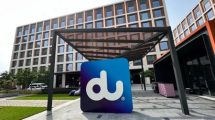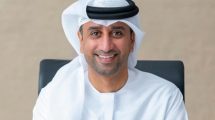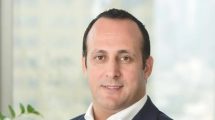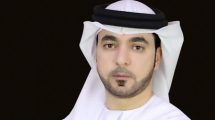 Du is a UAE-based telecommunications service provider that started its services in February 2007. Despite starting in a market with over 120% mobile phone penetration, du experienced phenomenal growth. Du is the fourth most valuable brand in the UAE and one of the most recognised brands in the region, with a favourable perception among subscribers.
Du is a UAE-based telecommunications service provider that started its services in February 2007. Despite starting in a market with over 120% mobile phone penetration, du experienced phenomenal growth. Du is the fourth most valuable brand in the UAE and one of the most recognised brands in the region, with a favourable perception among subscribers.
Fahad Al Hassawi, Chief Commercial Officer, du, says: “In the broadcasting field, du acquired Samacom, a leading teleport in the MENA region, in 2006. As part of the du teleport, Samacom has witnessed excellent growth in 2015, growth that contradicted the general economic trends. For example, the number of TV channels has grown by 18% and the number of satellite uplinks increased by 10% compared to the previous year. From a quality perspective, the broadcasters continued to migrate their services to HD and Samacom maintained its superior position as the top teleport in the MENA region.”
“Keeping all that in mind, we are very optimistic about our 2016 prospects. We are building a new teleport in Dubai in order to cope with the huge demand and maintain pace with our customers’ growth plans.”
Du has large scope in mobile, fixed, managed services and other services. As far as the scope of broadcasting services is concerned, the operator’s plans were to accelerate Samacom’s growth and sustain high customer satisfaction by focusing on quality of service. Samacom’s services were enhanced by being a part of a telecom operator.
Hassawi says: “We have adopted a partnership approach with our customers that enables us to serve them the best on their growth requirements. This approach also means complete transparency with our customers regarding ongoing operations for their services. We have a very prestigious list of broadcasting names trusting their services with du: Dubai Channel Network, Abu Dhabi Media, MBC, OSN, Discovery Network and others. We continue to build on our success story.”
Ahmed Almuhaideb, Vice President – Broadcasting and IPTV Services at du, says the company is developing solutions using the cloud for playout customers. As an industry in general, du is moving towards virtualisation of its infrastructure.
“4K TV is the new format that all broadcasters are talking about. We hope to start uplinking a 4K TV signal during the latter part of this year and we are very excited about that. As for next year, however, we expect to see incremental growth of 4K TV channels available for our satellite TV viewers. I don’t anticipate as fast a growth as we’ve experienced with HDTV.
“There are a few reasons: the costs, at this point in time, might make several broadcasters very hesitant to take that step. The operational cost has an even higher impact in terms of the high bandwidth requirement on the satellites. Another factor is the limited supply of content on 4K. Both factors can be addressed and solved in the very near future, since worldwide 4K content is building up fast and technology is bound to give solutions that will ease the cost problem. On the plus side of 4K, 4K TV will be demanded by the high income households, an exclusive segment of the market which can be easily targeted by advertisers of high-end products,” explains Almuhaideb.
For the last eight years, Samacom has maintained its rank among the top ten teleports in the world. The company shares close ties with all satellite operators, and its partners include Yahsat, Arabsat, Nilesat, Eutelsat, AsiaSat and SES. Many of these operators are customers of Samacom services as well as service providers. Samacom maintains close ties with operators through reciprocal site visits, conferences and bilateral meetings.
“The UAE has a very prosperous economy, a well-served and very advanced telecom sector, and mobile phone and smartphone penetration rates that compete with highly advanced economies such as Western Europe. The only way to survive is to provide a differentiated customer experience such as high data rates and widespread coverage. We have been investing, enhancing and improving our services since the very first call was made on our network.
“For example, duTV offers a variety of TV channels, several features and the like to our fixed services consumers and enterprises. Soon these services will be available to all of our customers in UAE rather than being limited to newly developed areas in Dubai. We have also introduced duView for a complete multi-channel experience where our customers can watch TV on their mobile or tablet. duView and duTV were distinguished in several professional conferences in the region.
“When it comes to broadcasting, I am not sure that the UAE market can be considered a crowded market. We are very fortunate to be in the position that we are in. Dubai and the UAE government in general welcome enterprise and innovation. Through Media City, TwoFour54 and other hubs, the UAE has become the media hub in the MENA region. Of course the competition is fierce when it comes to providing state-of-the-art technology and service quality, but this is good – we would rather compete on quality as it motivates us to work even harder on our innovation capabilities,” says Al Hassawi.
Du is staying ahead of the competition regionally by innovating in terms of service quality and technology. The telco is also collaborating closely with its partners to ensure that it maintains levels of service and brings the latest technologies to Middle East customers.
The role of any regulatory body is to nurture growth and ensure all stakeholders benefit in the process. This is true for the UAE’s TRA too, which has been playing a decisive role in ensuring the growth of UAE telecom, keeping larger societal goals in mind.
Al Hassawi says du’s experts are working closely with technology partners, infrastructure vendors and standardisation bodies to help shape and clarify the 5G network requirements, especially from an operator perspective.
Last year, the International Telecommunications Union (ITU) approved du’s submitted contribution regarding 5G standardisation, entitled ‘Proposal to launch the 5G studies in SG13’. The contribution outlines du’s research on the basic and most important requirements for the road to 5G, its current candidate technologies and architectures, and the concerns and issues foreseen with all the highlighted candidate technologies and architectures.
5G is set to serve three main types of use case. The first is massive mobile broadband. This basically provides the ability to provide 1Gbps+ speeds (with minimum guaranteed speed in the range of 10Mbps at the cell edge), in addition to wide area coverage with deep indoor penetration. The main targets for this use case are ultra HD video streaming, 3D video streaming and augmented reality, as well as serving high-density locations and still providing impressive speeds.
Then there is critical communications. This use case targets very high reliability as well as ultra-low latency, in addition to wide area coverage with deep indoor penetration. The main targets for this use case are future industrial automation, remote operations, robotics, automotive vehicle to vehicle communications and real-time traffic control.
Lastly, 5G will be used massively for IoT. This use case targets the billions of connected devices (things), but on condition of sustaining very long battery life at a very low cost. In addition to wide area coverage with deep indoor penetration, the main targets for this use case are smart cities, wearables and the future connected IoT.
“Currently, we are at the stage of definition of technical performance requirements, evaluation criteria and methods, and submission templates. The next phase will be the submission of proposals for evaluation,” says Al Hassawi.
In line with du’s strategic objectives, 2015 saw the company enter a phase of transformation in which it examined its business model against the industry’s shift towards digital delivery. In doing so, du has been able to hone its strategy to ensure sustainability and maximise value for both customers and shareholders.
“Looking ahead, we remain committed to many of the UAE government’s initiatives aimed at enhancing the lives of UAE citizens and the development of a digitally enabled ecosystem. The UAE’s Smart Government and Dubai’s Smart City initiatives are great examples of this. Data continues to drive our business. Customer demand for connectivity remained at healthy levels during the fourth quarter, while our fixed and enterprise businesses showed great improvement. In the last 12 months we have seen our 4G uptake increase by 20%; 3G usage has been growing as well, but at the expense of 2G, which is in a declining phase. This encourages us to continue investing in newer technologies and enhance our footprint,” explains Al Hassawi.
Du’s revenues have grown to AED 12.34 billion ($3.36 billion), a 0.8% increase compared to 2014. At the same time, fixed line revenue has risen to AED 2.55 billion ($69.43 million), up 13.8% over the course of 2015.
Du’s success is primarily due to its customer service initiatives. Al Hassawi says that as a company, du truly believes that fostering an ecosystem of engagement for staff and customers results in memorable experiences for both.
“Hence our efforts to ensure customer satisfaction begins at a much earlier stage, by ensuring that our staff members are satisfied. In an ongoing effort to engage customers and meet their changing needs, we continue to update the retail experience across store locations around the region. These updates will eventually encompass all of du’s customer interactions – at our online shop, social media channels as well as face-to-face.
“In 2014, our centres resolved over 20 million calls addressing consumer, enterprise and directory enquiries. According to our customer satisfaction survey results, 92% of our consumer and 86% of our enterprise customers were satisfied with our services. We aim to continue providing a personalised service across our call centres – our Fujairah call centre, for example, is 100% Emirati-run with a 94.4% female contingent enabling our customers to experience true Emirati hospitality. We also offer mobile customer service support with our du app, du self-help pages on www.du.ae for mobile and home, as well as du’s online community website and the du Selfcare portal,” explains Al Hassawi.
Du’s customers can also get in touch via social media. Al Hassawi says the company actively monitors all its pages, including Facebook and Twitter, and promptly addresses all customer comments, suggestions, feedback and complaints.
“What we have learned is that the customer is now in the driver’s seat when it comes to demand. The growth of social media is also driving open communication between the brand and individuals on an open platform – this real-time communication has driven customer expectations to new heights. At du, we keep our ear close to the ground when it comes to anticipating customer needs. By using predictive analytics and analysing data from multiple sources, we are able to anticipate customer needs and offer them services and solutions that they need, before they know they need them.
“This is the future of customer service in the smart city, and we expect customer service expectations to continue evolving to create more avenues for data analytics in business, to ensure an omni-channel experience across all touch points,” concludes Al Hassawi.












Add Comment